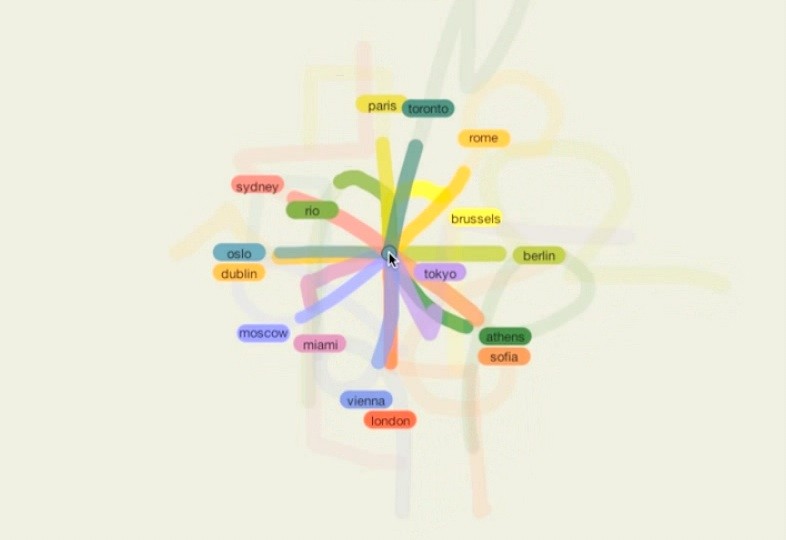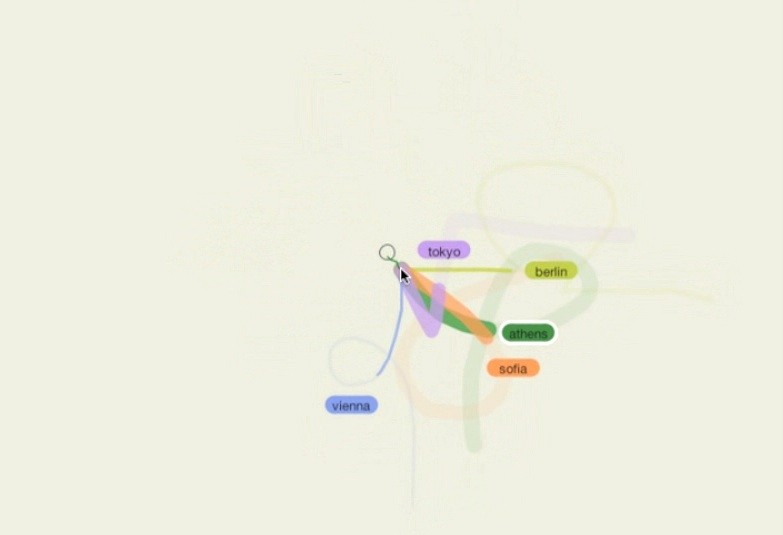🧬⚙️selling value chain tools as evolutionary entrepreneurship #100
Replies: 11 comments 16 replies
-
Beta Was this translation helpful? Give feedback.
-
|
charlie shared ethan's blog on research singularities and i combined charlie's clockspeed and ethan's blog to understand, evaluate, imagine 1. INTEG: why research is changing from modular to integratedResearch integration is driven by
One can benefit from creating unified research team that captures value created from proprietary technologies. 2. BENCHMARK: why 1 increases arbitrage in selling technology developed in fast clockspeed market to slower clockspeed markettechnology: due to increased dynamics within and between markets, arbitrage of selling technologies across markets increases. Especially from fast clockspeed to slow clockspeed market; #224 (reply in thread) summarizes how |
Beta Was this translation helpful? Give feedback.
-
|
q from jb's thesis q2. hmi? definition of exaptive toolbox? can exaptive toolbox algorithmically modeled? kuffman mentioned use (of screw driver is indefinite and ordinal(? can be counted one, two, three) hence cannot be algorithmically modeled the rest two questions are in the photo in blue ink. thanks jb! |
Beta Was this translation helpful? Give feedback.
-
|
synthesizing fine_buy_make.pdf, Entrepreneurial+Strategy+Compass.pdf, Gans4_exp_choice_disrup_tech.pdf
table 2,3 need further tests
|
Beta Was this translation helpful? Give feedback.
-
|
@jeanbaptiste <> angie agenda strategymission: diffuse bayes in business job strategy
research strategy (operations)
Q2: How fundamental entrepreneurial principles such as constraints or randomness influence strategic pivots and business model innovation ?
tactics
|
Beta Was this translation helpful? Give feedback.
-
|
applying auto industry evolution dynamics to computing industry then scoping to bayesian auto industry evolution:
the evolution of the auto industry from Ford's integral model, through GM's modular approach, to Toyota's refined integral system. This pattern can be extrapolated to understand similar transitions in other industries, such as computing. Computing Industry Evolution:Here's a simplified version of the Computing Industry Evolution table that focuses on the key aspects of clockspeed theory: Simplified Computing Industry Evolution
This simplified table captures the essence of the computing industry's evolution through the lens of clockspeed theory. It shows how the industry structure, product architecture, and innovation speed have changed over time, reflecting the cyclical nature of integration and disintegration described in the double helix model. The table illustrates how the industry moved from a slow-moving, vertically integrated structure (IBM Era) to a fast-paced, horizontally disintegrated one (Wintel Era), and then to a very fast-paced, partially re-integrated model (Platform Era). This progression aligns with the concept of increasing clockspeed in the industry, where cycles of innovation and change occur more rapidly over time. By focusing on these key aspects, the table provides a clearer and more accessible overview of how clockspeed theory applies to the computing industry's evolution, making it easier for people to grasp the concept at a glance. Bayesian Computing Evolution:
This table highlights the evolution of Bayesian computing, focusing on the transition from early custom implementations to the BUGS era, and then to the current Stan-dominated era. It emphasizes aspects that would be particularly relevant to StanCon attendees, such as algorithmic improvements, ecosystem growth, and the expansion of the user base. |
Beta Was this translation helpful? Give feedback.
-
|
Teppo Felin's talk on AI and human cognition and causal reasoning. long story short, i think probabilistic program can do what teppo argues llm cannot do. summary below. thanks @chasfine for introducing and @jeanbaptiste for attending human cognition causal reasoning teppo felin AI replacing human decision-making with examples and quotes from experts. 0:00 Expert discusses AI's potential to replace strategists, entrepreneurs, and researchers. Unknown speaker says AI may already surpass biological intelligence, and large language models are a key area of research. Kahneman and others suggest that AI will eventually replace human decision making, with AI serving as scientists and subjects. AI's role in decision-making, focusing on the limitations of the "data first" approach. 4:23 The speaker discusses the potential of AI in business, particularly in predicting outcomes and making decisions. The speaker argues that starting with data may not always be the best approach in decision-making under uncertainty. The speaker discusses the idea that the scientific method is becoming obsolete in the age of big data, with correlation superseding causation. The speaker references a paper co-authored with five others, including a cosmologist, biologist, and computer scientist, which challenges the idea that machines and humans process information in the same way. The speaker discusses the history of cognitive architectures, from the 1956 Dartmouth conference to recent advancements in large language models. The speaker highlights the limitations of past approaches, such as limited generality and specificity, and how current AI models are attempting to overcome these limitations. AI's ability to process and generate human language, with a focus on large language models and their limitations. 11:47 The speaker discussed the history of AI research, from rule-based systems to sub-symbolic systems like artificial neural networks and machine learning. The speaker highlighted the potential of current AI systems, such as large language models, for strategic decision-making and problem-solving. Unknown Speaker discusses large language models and their capabilities. Speaker highlights differences between human cognition and large language models. Speaker emphasizes the importance of attention in large language models. Limitations of large language models in reasoning and understanding context. 17:48 The speaker discusses the capabilities of large language models (LLMs), including their ability to generate novel sentences and memorize vast amounts of information. The speaker presents a thought experiment involving a hypothetical LLM trained on all text up to 1633, demonstrating the limitations of LLMs in terms of their inability to access information beyond their training data. The limitations of AI are highlighted when it comes to reasoning tasks, as large language models can only mimic the data they've been trained on. Francois Scholt has developed an abstract reasoning corpus to test the ability of large language models to genuinely reason and solve new problems. Bayesian updating and evidence-based decision making in the context of flight in 1903. 23:21 Unknown speaker discusses limitations of computational models in cognition, particularly in producing text and updating beliefs based on evidence. Speaker pushes back on the idea that data and evidence provide justified belief and knowledge, suggesting that Bayesian updating may not always be the best approach. Unknown speaker discusses flight in 1903, citing lack of successful attempts and scientific consensus against it. Evidence and data are presented to update beliefs on flight, including observations of birds and public displays by scientists. How theories and beliefs shape data collection and decision-making. 29:28 The Wright Brothers theorized flight was possible in 1-10 billion years, despite evidence to the contrary. The Wright Brothers ignored data, focusing on specific problems to solve, such as lift, and used wind tunnels and propulsion to experiment with rotation. The speaker discusses the role of data in decision-making, highlighting the importance of theories and creative problem-solving in understanding human cognition. The speaker references neuroscientist Henry Yen's work on fruit flies, emphasizing the complexity of their information processing and problem-solving abilities. Using experimentation and causal reasoning to create new knowledge, with a focus on the role of beliefs and data in decision-making. 34:27 Speaker discusses the importance of data belief asymmetry in creating new knowledge and value. Speaker argues that humans have unique strengths in forward-looking causal reasoning and experimentation. Speaker emphasizes the need for the right data and theory to guide experimentation, rather than just more data and compute. AI's limitations in decision-making and problem-solving. 37:55 The speaker discusses the idea that people's beliefs and behaviors can be influenced by the data and information they receive, and how this can lead to different conclusions and decisions. The speaker provides examples of how this plays out in different contexts, such as Airbnb, and how people's perceptions of the company changed over time as more data became available. Unknown Speaker argues AI is constrained by training data, lacks causal reasoning abilities. Speaker skeptical of AI hybrid technologies, believes human cognition is more than prediction and data. Human cognition and AI, with focus on creativity and intuition. 43:08 The speaker argues that human cognition is not just data processing, but involves taking theory, making leaps of faith, and relying on intuition. The speaker suggests that this capacity for biases and motivated reasoning is a fundamental aspect of human cognition, despite being a bad thing. The speaker argues that conventional wisdom can be limiting and that contrarian theories can lead to novel and true ideas. The speaker questions why we can't program an AI to come up with new ideas and experiments to prove or disprove them, like humans do. Using evolutionary mechanisms to program AI with adaptive reasoning capabilities. 48:42 Unknown Speaker discusses the limitations of AI and the need for leaps of faith in decision-making. Speaker highlights the importance of considering biases and evolutionary mechanisms in AI development. Speaker questions whether AI can be programmed to take leaps of faith like humans, and if so, how. Speaker references new AI models, such as ChatGPT, and their potential for reasoning capabilities. |
Beta Was this translation helpful? Give feedback.
-
evolution = frequentistAs described in three fits for my research proposal #252 (comment), I'm curious how does definition/perspective of
Evolutionary learning is not useful for pivoting with fixed goal. With exaptation, constraint on fixed goal is relaxed but I don't have concrete math model. #246 (reply in thread) touches this idea. pivoting to new desirability from below is visual for this idea. CROSSFIT🏋🏼Using clockspeed spirit of benchmarking across species and industry, I wish to benchmark across three fits in the order of fastest to slowest clockspeed: deal-investor, product-market, program-entrepreneur fit. i.e. entrepreneurial finance is fruit fly 🪰. @chasfine's use of evolution: Prediction model quality - fitness of use? 𝌭Bayesian workflow itself is philosophy on defining fit. Some models are useful, but how do we know which ones? Towards a unified Bayesian model taxonomy |
Beta Was this translation helpful? Give feedback.
-
4. ying-yang 음양branched from #23 (comment), Matt's |
Beta Was this translation helpful? Give feedback.
-
|
transposed charlie's modular to integral diagram so that it can be matched with my AB to ABDE journey |
Beta Was this translation helpful? Give feedback.
-

|
Beta Was this translation helpful? Give feedback.


























Uh oh!
There was an error while loading. Please reload this page.
Uh oh!
There was an error while loading. Please reload this page.
-
1. value chain tools
🎞️filming clockspeed
1. nho, tsp forces behind integral2modular, modular2integral given industry and product architecture structure
When the industry structure is vertical and the product architecture is integral, the forces of disintegration push toward a horizontal and modular configuration. These forces include:
when an industry has a horizontal structure, another set of forces push toward more vertical integration and integral product architectures. These forces include:
Simulation-testing based Bayesian workflow and operations for entrepreneurship has lots in common. Fit fast, fail fast, supported by diagnostics is one example. Charles Fine is a system dynamics fan who applies the tool to capture meta-core competency of the company:
In order of recommendation:
clockspeed book and summary:
97_Three-Dimensional Concurrent Engineering:Clockspeed-based Principles for Product, Process, and Supply Chain Development
96_Industry Clockspeed and Competency Chain Design
lg's summary of Clockspeed: Winning Industry Control in the Age of Temporary Advantage
Beta Was this translation helpful? Give feedback.
All reactions